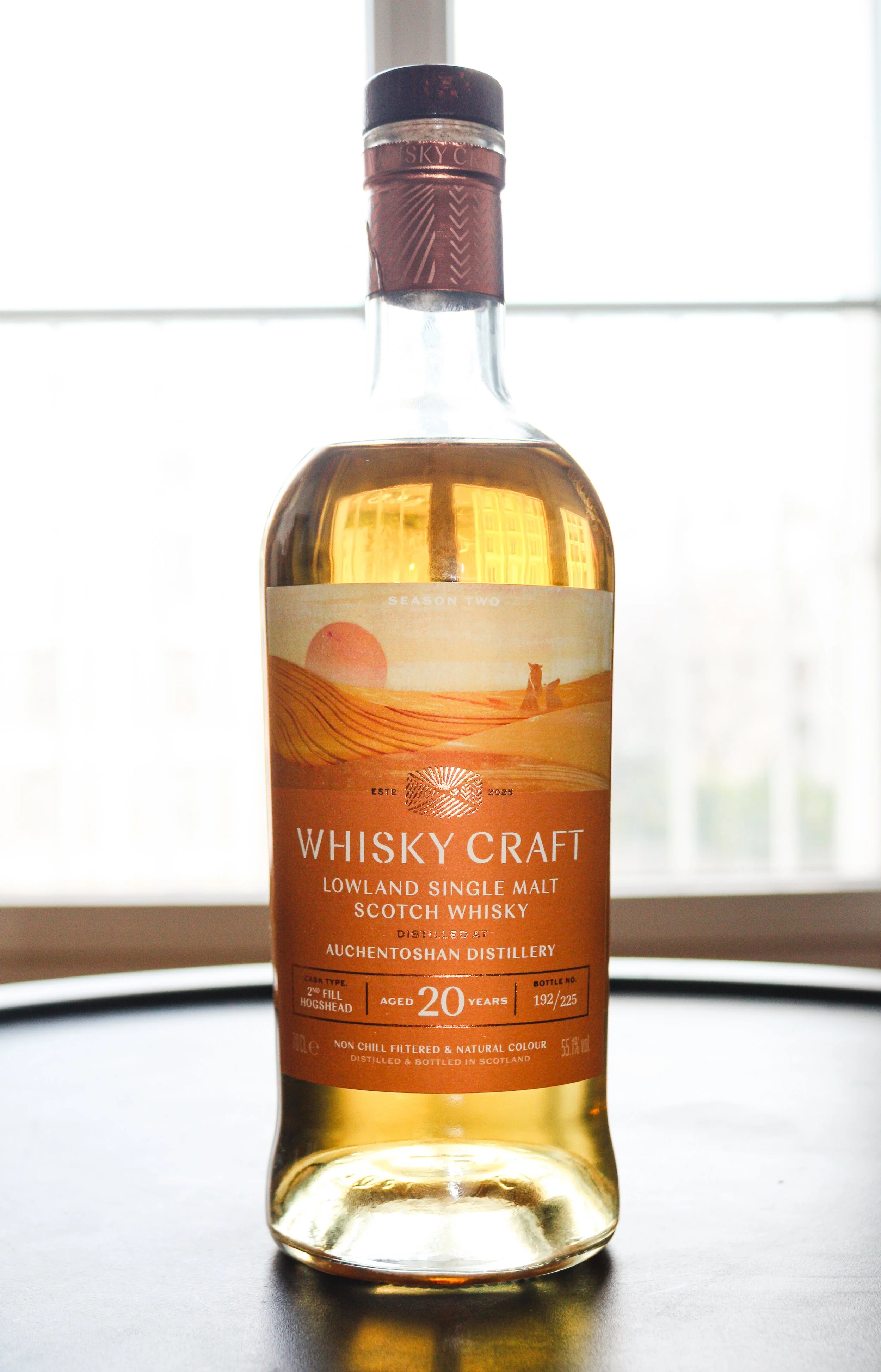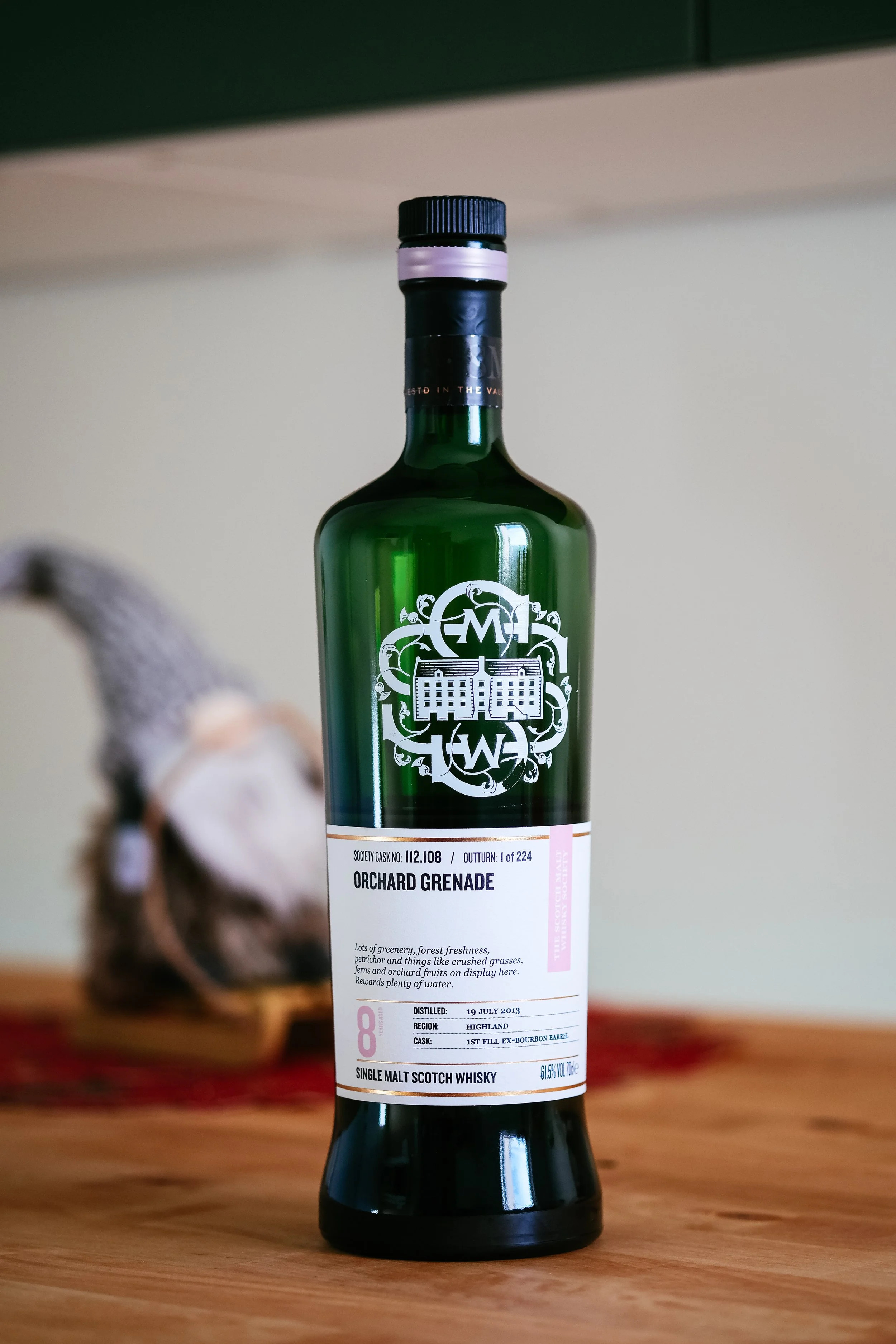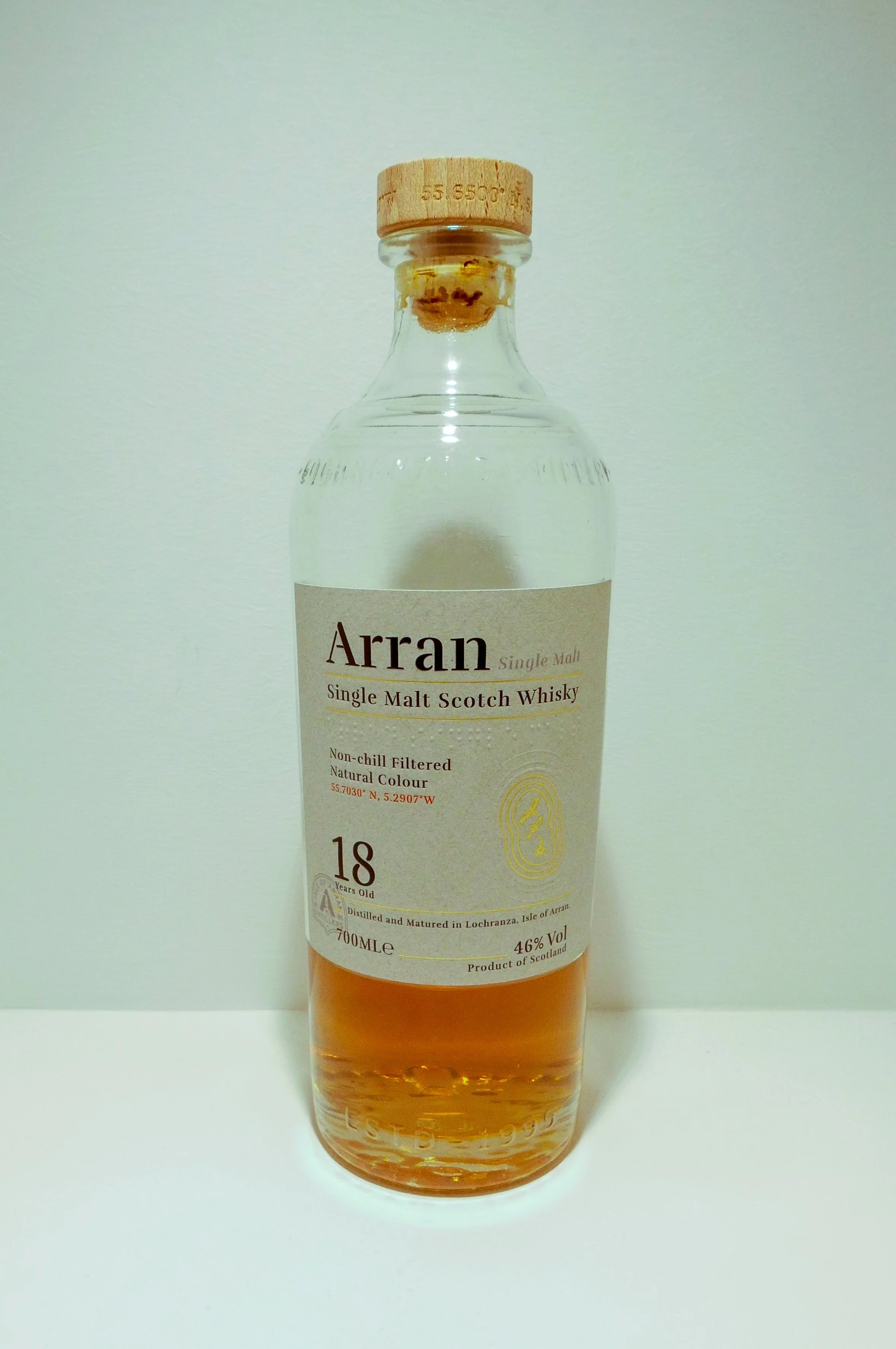Longmorn 12yo Signatory Vintage Cask Strength
2024 first-fill bourbon release | 56.9% ABV
Score: 7/10
Very Good Indeed.
TL;DR
A tropical fruit-fest from an overlooked distillery
Bad whiskies? Or bad decisions?
The novelist, Raymond Chandler, once famously said: “There is no bad whisky. There are only some whiskies that aren’t as good as others.”
As someone who often uses Dramface as a platform to criticise the state of the industry – the cynicism we see with regards to pricing, and the poor presentation that’s almost endemic among the expressions that grace the shelves of the supermarkets – it might surprise you to learn that actually, I agree with Chandler’s assessment.
There is no bad whisky. Or at least, there’s very little of it. Despite the fact that I regularly decry the likes of caramel colourant and chill-filtration, there are actually very few whiskies that I wouldn’t be happy to drink, were it not for better whiskies that have set the bar with regards to my frame of reference. If, for instance, you put me on a desert island with only a bottle of Jura for company, I’m pretty sure that I’d enjoy every drop of that Jura. The reality is that we’re not on a desert island, and the shops – at least here in the UK – are replete with far better expressions.
When we critique whisky, as with when we critique anything, our critique is usually relative to whatever else is out there that’s comparable. Hence, we often shun the likes of Macallan and Dalmore because, relative to many whiskies in the same style which we know are just as good, they’re overpriced. We pop into our supermarkets and regularly ignore what’s on the shelves of the spirits aisle because we’re already aware that, compared to the sorts of expressions that we can pick up from the specialist retailers, the presentation on those supermarket offerings for single malts is usually poor.
It’s not that these whiskies are bad per se; they’re just not as good as they could be. Typically, the whisky that comes out of the distillery is decent. The problem occurs the moment that it’s disgorged from the cask. Very often, these ‘lesser’ expressions are, at that point, either chill-filtered, watered down or otherwise ruined with caramel colourant; or – as is the case with the two aforementioned distilleries – released into the market at a price that makes them unappealing to those of us who know what else can be had at a similar RRP. Or both.
Perhaps then, a more accurate, updated quote to reflect the state of whisky in 2025, isn’t “there is no bad whisky,” but rather, “there is no bad whisky – there are only bad decisions made by the people who bottle and market the whisky.”
I say all of this as an enthusiast and, specifically, speaking about single malt, but also because the whisky that I’m about to review is from a distillery that’s capable of producing very good whisky. However, its current owners – Pernod Ricard/Chivas Brothers – seem to have made bad decision after bad decision; something that has made the whisky from that distillery difficult to really engage with.
I’m talking about Longmorn, a distillery that I know from experience, can produce some pretty incredible liquid, but which has never really managed to stay on my radar for more than about 5 minutes, largely because of a combination of bizarre marketing decisions and poor presentational choices.
Those of you who have been into whisky for a while will probably already be aware that Longmorn’s now discontinued 15yo is regarded by many as something of a cult classic. It was pulled in 2005, before I got into whisky, so I don’t remember it being readily available, but several years ago, I did chance upon a bottle. Myself and Murdo reviewed it a while back as part of Murdo’s excellent Longmorn 16yo comparison review, and I think it’s fair to say that whilst neither of us were blown away by it, it was still solid.
The 15yo Longmorn was replaced by a 16yo Longmorn, which I do remember, but which – sadly – I never got around to trying. I know that it was well loved though. Why Pernod Ricard decided to replace the much-lauded 15yo with a 16yo expression, I don’t know, but evidently, not too much damage was done. That is, until they discontinued the 16yo and replaced it with the Distiller’s Choice expression. Bottled at 40% ABV, Longmorn Distiller’s Choice is generally regarded, at least by everybody I’ve spoken to, as worth a swerve.
In 2016, Longmorn re-released the 16yo, this time in slightly different livery, at the original 48%. You might be forgiven for thinking that Pernod Ricard saw how badly the Distiller’s Choice was received and decided to backtrack and make amends with their 16yo re-release; but in 2022, the 16yo was discontinued again. All was not lost, though, because for a while there was an 18yo ‘Secret Speyside’ release, which I also grabbed a bottle of. The 18yo ‘Secret Speyside’ – which was decent – was priced around £90. Until it wasn’t. When I went to replace it, a few months after buying the first bottle, the price had gone up to £110 - and I decided to pass. Since then, it seems to have disappeared altogether.
If reading the above couple of paragraphs has made your head spin, then that’s because the trajectory of Longmorn releases is, frankly, utterly baffling. The only current Longmorn releases I can find - that aren’t from indie bottlers - are a 25yo that retails for around the £400 mark, and the Distiller’s Choice which is bottled at 40%. So in short, we’re talking about a distillery that scotched a well-loved 15yo expression, replaced it with an equally popular 16yo expression, got rid of that and replaced it with a bargain basement NAS expression that nobody liked, went back to the 16yo expression but ditched that, released a very reasonably priced 18yo expression, jacked up the price on it, discontinued both the 16yo and the 18yo expressions, and then went down the premiumisation route with a 25yo that retails for the price of a second hand Nissan Micra.
That’s easily one of the longest sentences that I’ve ever written, and I think it bears testament to just how much of a muddle Longmorn’s product development must be in. Frankly, it’s easy to see why we’re not really talking about this distillery, certainly from an official release perspective.
And yet we should be. Because, like most distilleries, Longmorn makes great whisky. I know because I’ve tried it, I’ve enjoyed it…and then I’ve been disappointed when I can’t get more of it.
As with most of the whiskies that we struggle to engage with, the problem with Longmorn isn’t the liquid, but rather the decisions that are made regarding price, presentation and marketing. More specifically, the problem here is the lack of a consistent core range. A lack of direction. If we want Longmorn, we’re faced with a choice: either we go to the secondary market, or we’re forced to pick between the uber-premiumised Secret Speyside 25yo, or the poorly presented Distiller’s Choice.
Or maybe we’re not. Maybe there is an answer. And maybe that answer comes, as always, in the form of the indie bottlers. We’re lucky in the world of whisky to have another option. Indie bottlers like Cadenheads, Signatory, Gordon and MacPhail and many more, step into the void and fill the gap that poor presentation, premiumisation and a general lack of availability leave in their wake. This is the case with many of the distilleries whose official bottlings leave us cold. Certainly, it’s the case with Longmorn, which seems to be readily available if you’re willing to go the indie route.
The expression I’m reviewing here was released as part of Signatory’s Cask Strength Collection series – those fancy decanters that seem to attract a premium when compared to value-focused ranges such as their Un-chill Filtered Collection or their 100 Proof range. I have no idea of the behind-the-scenes discussion regarding pricing that goes on at Signatory, but anecdotally speaking, I’ve noticed over the last couple of years that these Cask Strength Collection bottlings seem to be increasingly affordable.
Whilst once upon a time I tended to swerve them, lately they’re increasingly making their way onto my radar. This Longmorn was £79, which isn’t cheap for a 12yo whisky, even at Cask Strength, but which is, nevertheless, reasonable enough that I decided to take a punt.
Review
Longmorn 12yo, Cask Strength Collection, first-fill ex-bourbon, distilled 2012, bottled 2024, cask 921, 226 bottles, 56.9% ABV
£79 paid, mostly sold out
If you’ve never owned one of these decanter style bottles before, they are impressive – aesthetically speaking at least. I don’t know the logic behind which whiskies Signatory choose to bottle at cask strength, which whiskies they choose to bottle at 100º proof, and which whiskies they choose to dilute to 46% as part of their Un-chillfiltered range, but what I can say is that holding this bottle – with its oversized cork and thick glass – you do feel as if you’re holding something that’s potentially a bit special. That said, it’s also a bottle that you could easily lose your grip on when pouring, so you do have to be careful.
Of course, we pay for all these bells and whistles, so the cynic in me wonders whether it would be better if they’d just dispense with the fancy packaging and knock a tenner of the price, but even so, you can’t argue with the fact that this is a good-looking bottle of whisky. As a Signatory fanboy – someone who’s lost count of the number of expressions I’ve had from their Un-chillfiltered range – I can safely say that packaging is literally the last thing on my mind when I buy a bottle. Frankly, it doesn’t even feature in my calculations.
Still, it’s nice to have a bottle that looks good. This would make a great gift for someone who’s into whisky and who’s moved beyond the usual run-of-the-mill supermarket expressions. The whole thing says ‘I’m a bit fancy,’ without any superficial nonsense about luxury, or rarity, or crystal-clear spring water from ancient mountain streams, or any other superfluous label waffle.
Score: 7/10
Very Good Indeed.
TL;DR
A tropical fruit-fest from an overlooked distillery
Nose
The nose is promising. It’s clean, and very ‘ex-bourbon.’ I get cream soda, Victoria sponge and a little white wine. There are also some tropical fruits here – lychee and pineapple, namely – and some pineapple creams. I also get pink wafer biscuits. On the whole, it’s a solid, clean, fresh nose.
Palate
The palate pretty much delivers on the nose. There’s a little vanilla, but generally speaking the story here is one of tropical fruits and confectionery. I get boiled sweets – pear drops, specifically – and some aniseed balls, along with some orange zest, some water melon, some coconut, some more lychee and some pineapple. There’s also a slightly tannic note, which shows itself in the form of black tea and a hint of chamomile. If I dig around for it, I can also find some lavender, although it is quite subtle.
The Dregs
I started this review by talking about how, as we acquire more experience with whisky, we develop frames of reference.
Recently, I’ve had what might be considered a good run of bottle acquisitions. In fact, it’s been a few months now since I’ve opened a bottle of whisky and been disappointed. I find that I tend to go through phases – sometimes, a couple of months will go by when the whiskies I buy don’t really seem to be anything other than average - and then all of a sudden I’ll have a run of bottles that are all really decent. This is just how it goes with whisky – it waxes and wanes – and if you buy new expressions regularly then you probably know the feeling. Frankly, it’s just part of the journey – especially if we’re talking about single cask, independently bottled expressions which you often have to take a punt on.
I say all of this because, right now, I have a very good bottle of Glenburgie on the go. I reviewed it recently, and since then, I’ve probably gotten another third of the way down the bottle, and it’s even better. It’s a belter of a whisky and I’m enjoying it a great deal. It’s early days yet, but right now it’s a contender for my whisky of the year.
This Longmorn is very, very similar. It’s a tropical, ex-bourbon matured, clean, naturally presented, single cask expression, at cask strength, from an indie bottler. It was more expensive than the Glenburgie, but it still represents good value. It’s a brilliant whisky, and I was very tempted to give it an 8.
I haven’t given it an 8 though, and the reason that I haven’t is because sipping it in contrast to the Glenburgie, I find that I enjoy the Glenburgie slightly more. The mouthfeel on this Longmorn is fine – it’s not thin by any means – but that Glenburgie is thick and oleaginous, and if anything, it shines a light on the one thing this Longmorn lacks that would otherwise push it to a higher score.
As I said at the outset, we acquire frames of reference when it comes to whisky, and it’s natural that we judge a whisky next to other similar whiskies that we’ve had. Right now, I’m enjoying two very, very similar whiskies side by side, and that’s given me the opportunity to evaluate them against one another. With the Glenburgie being slightly better and being worthy of an 8 – and the Longmorn being twenty quid more expensive – the Longmorn gets a 7. I’ll admit that I’ve been wavering though. If I didn’t have that Glenburgie to sip alongside it, I may well have given it an 8.
Either way, this is very good whisky. If you like your tropical, ex-bourbon matured, single cask expressions, then you could do a lot worse than hunting down a bottle of this. Okay, so it’s not cheap, but at £79, I don’t feel short changed. It does enough to justify the price; it just lacks that extra something that would elevate it to ‘something special.’
More importantly, it’s a whisky that speaks to the potential of Longmorn; a distillery that, as enthusiasts, we often have a hard time engaging with. Despite the lack of a well-defined core range – and after all the bizarre marketing decisions – it seems that there is still good, reasonably priced Longmorn available.
Although, as is often the case, thank goodness for the indies.
Score: 7/10
Tried this? Share your thoughts in the comments below. FMc
-
Dramface is free.
Its fierce independence and community-focused content is funded by that same community. We don’t do ads, sponsorships or paid-for content. If you like what we do you can support us by becoming a Dramface member for the price of a magazine.
However, if you’ve found a particular article valuable, you also have the option to make a direct donation to the writer, here: buy me a dram - you’d make their day. Thank you.
For more on Dramface and our funding read our about page here.


































